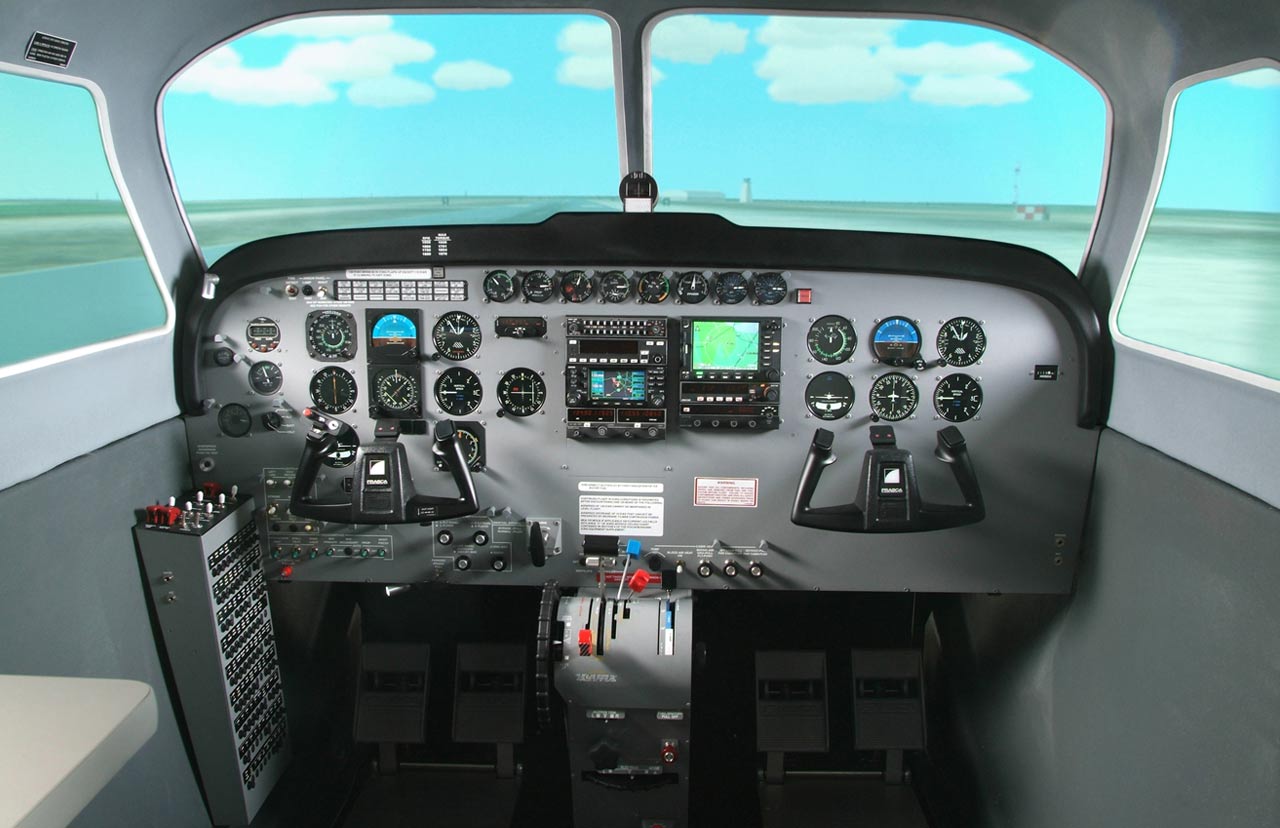
X-Plane or Prepar3D flight simulation software with Project Magenta G1000 or Flight1 Student PRO. 
 Obstacle icons, terrain, and waypoints on the map page. VFR and IFR Turnkey System with Glass Cockpit. Multi Throttle system and propeller variable pitch control available upon request. Suitable to simulate aircraft using Vernier throttles or other single-engine aircraft with fixed step propeller. High-Quality adjustable twin linked rudder pedals. Heavy-duty flight controls with passive force feedback, both on the Yoke and on the rudder pedals. Later versions had a 160-horsepower O-320, and a 180-horsepower Lycoming O-360 also became a popular option. This was the engine originally intended for the 177 Cardinal. In 1968, the power plant was replaced with a four-cylinder Lycoming O-320 producing 150 horsepower. Like the Cessna 170, the original 172 used the six-cylinder, 145-horsepower Continental O-300 engine. The Cessna 172 fuselage was modified to fit the new window configuration in 1963, and the forward visibility was also improved with the installation of a one-piece windshield. Omni-Vision is a wraparound rear window first introduced on the Cessna 182 and 210 models in 1962. Another distinguishing feature that sets the early 172 apart from the 170 is the straight, finlike vertical stabilizer. The tricycle gear helped make the Cessna 172 an excellent training airplane. The Cessna 172 was based on the Cessna 170 taildragger, and in 1956 the most notable difference between the airplanes was the gear. The Cessna 172 is the most produced aircraft in history. The 172 is still in production and is a relatively affordable plane, set at a price of around $300,000 (price varies depending on the amount of horsepower). As of today, the Cessna 172 is the most successful aircraft in history, with over 44,000 units built-more than any other plane. Its primary function is as a civilian utility aircraft.
Obstacle icons, terrain, and waypoints on the map page. VFR and IFR Turnkey System with Glass Cockpit. Multi Throttle system and propeller variable pitch control available upon request. Suitable to simulate aircraft using Vernier throttles or other single-engine aircraft with fixed step propeller. High-Quality adjustable twin linked rudder pedals. Heavy-duty flight controls with passive force feedback, both on the Yoke and on the rudder pedals. Later versions had a 160-horsepower O-320, and a 180-horsepower Lycoming O-360 also became a popular option. This was the engine originally intended for the 177 Cardinal. In 1968, the power plant was replaced with a four-cylinder Lycoming O-320 producing 150 horsepower. Like the Cessna 170, the original 172 used the six-cylinder, 145-horsepower Continental O-300 engine. The Cessna 172 fuselage was modified to fit the new window configuration in 1963, and the forward visibility was also improved with the installation of a one-piece windshield. Omni-Vision is a wraparound rear window first introduced on the Cessna 182 and 210 models in 1962. Another distinguishing feature that sets the early 172 apart from the 170 is the straight, finlike vertical stabilizer. The tricycle gear helped make the Cessna 172 an excellent training airplane. The Cessna 172 was based on the Cessna 170 taildragger, and in 1956 the most notable difference between the airplanes was the gear. The Cessna 172 is the most produced aircraft in history. The 172 is still in production and is a relatively affordable plane, set at a price of around $300,000 (price varies depending on the amount of horsepower). As of today, the Cessna 172 is the most successful aircraft in history, with over 44,000 units built-more than any other plane. Its primary function is as a civilian utility aircraft. 
The Cessna 172 Skyhawk is a 4-seat, single engine, high wing aircraft.










